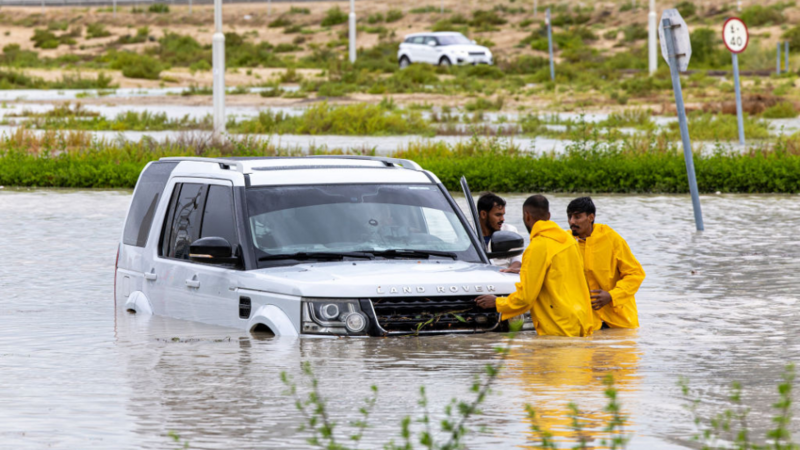Di big gully dem wey dey swallow places around di world
Scroll to continue
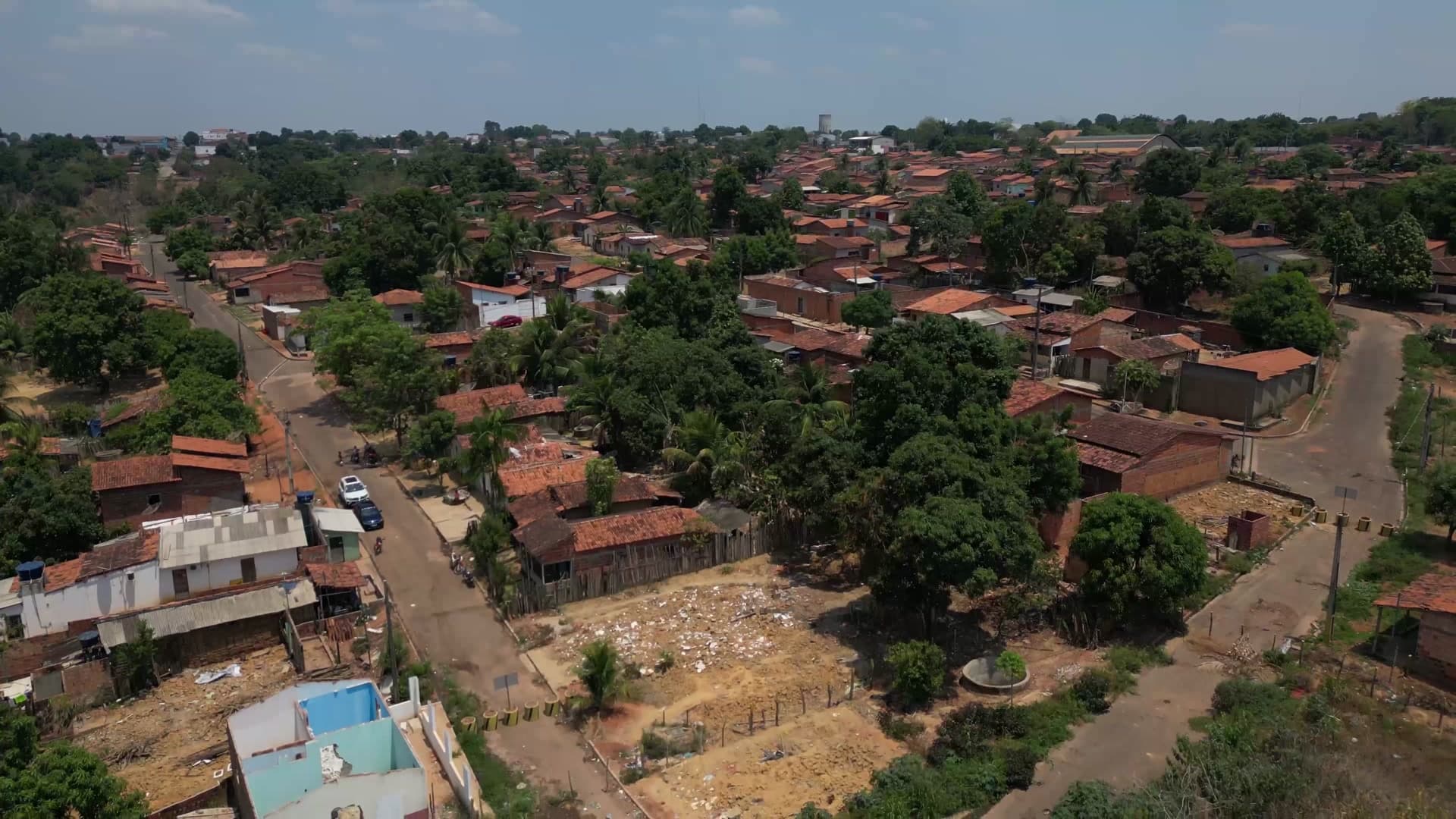
E get one time wey dis street bin dey bubble for Buriticupu, one city for north east Brazil.
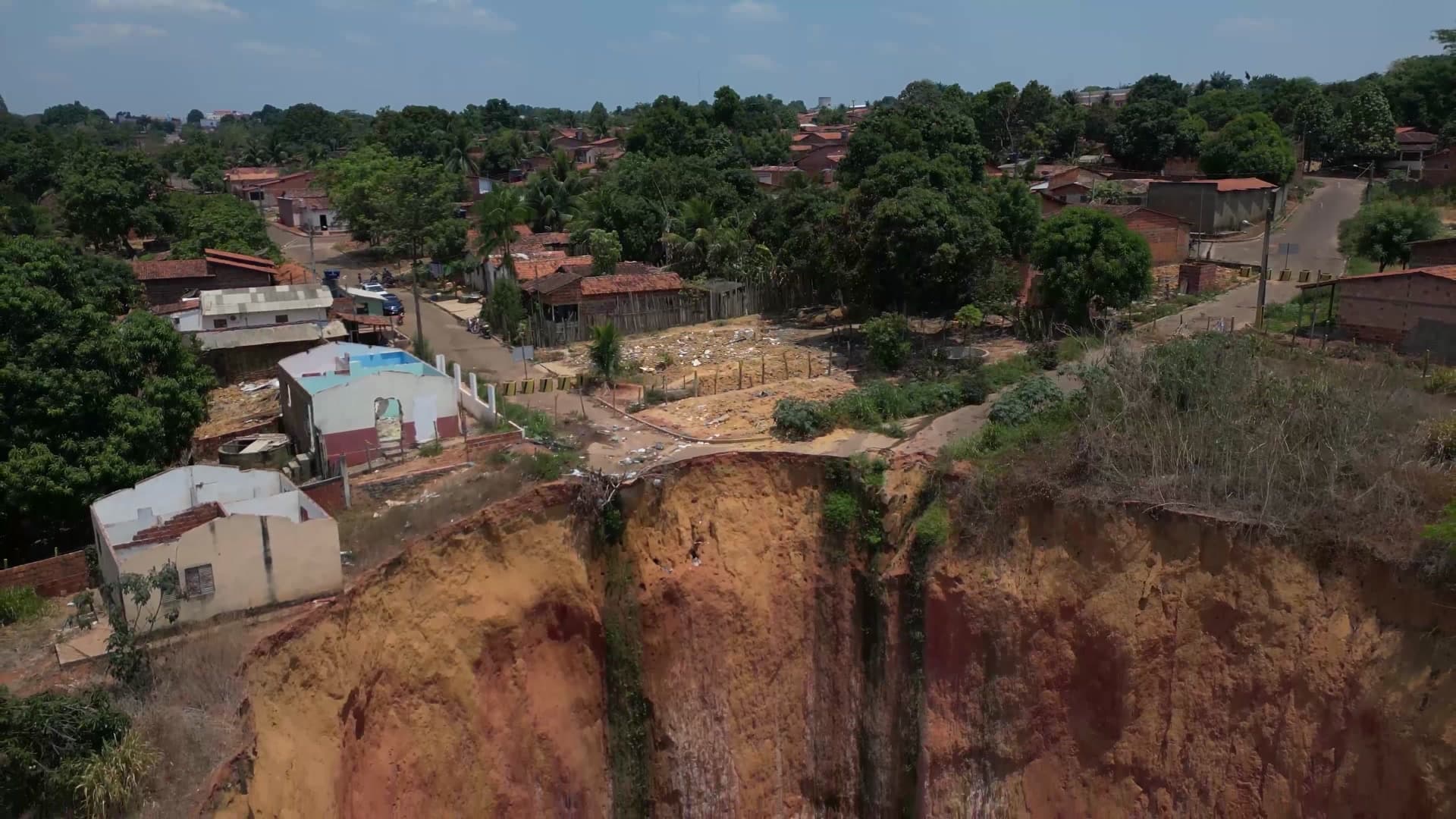
Now na very deep hole 80m deep - 20-storey building fit enta inside.
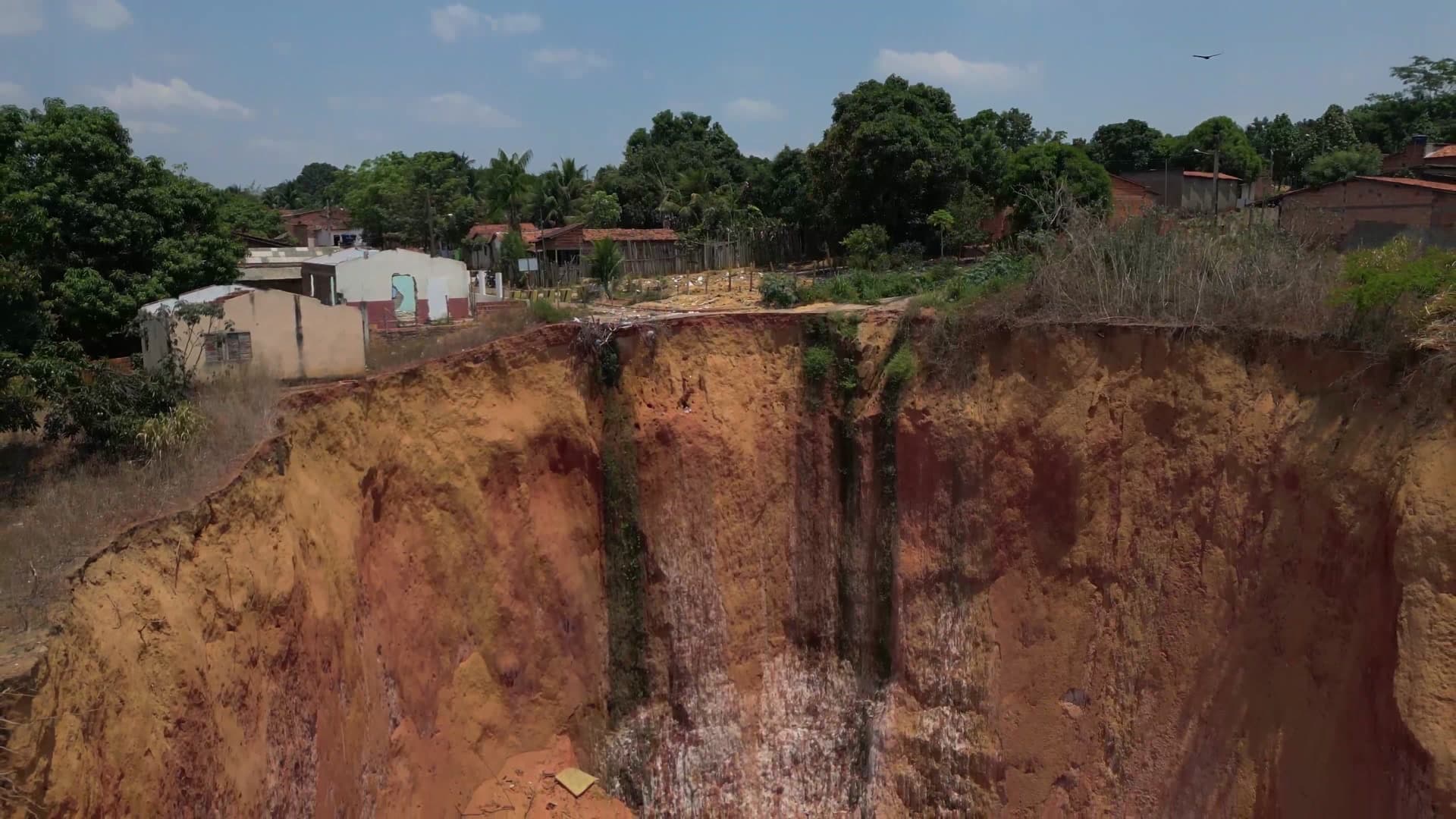
Local pipo sabi very deep gully like dis one as "voçoroca” or "land wey don tear" for indigenous Tupi-Guarani language.
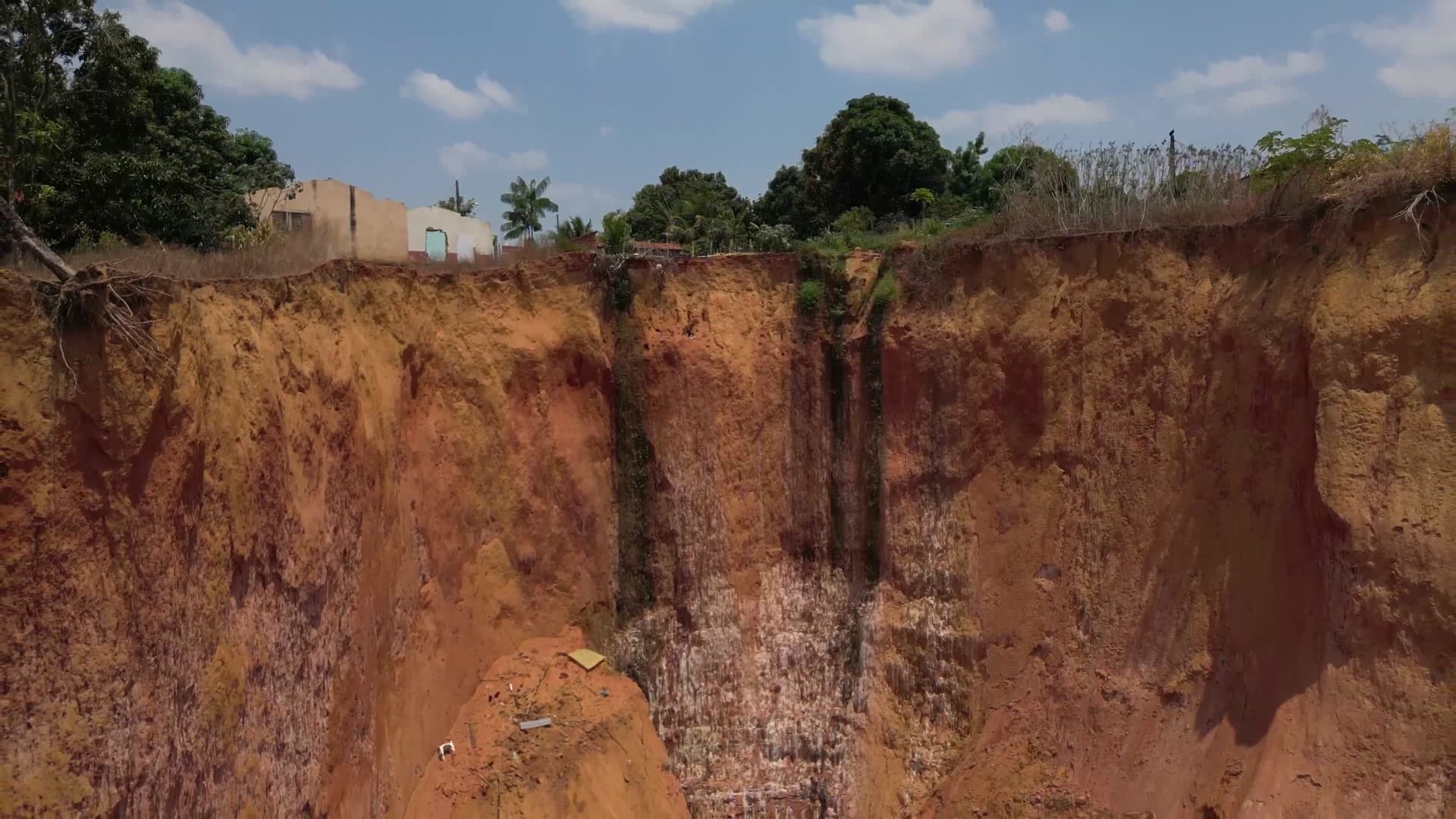
Di situation na result of gully erosion,one of di most aggressive forms of soil destruction wey rain and waste water dey cause.
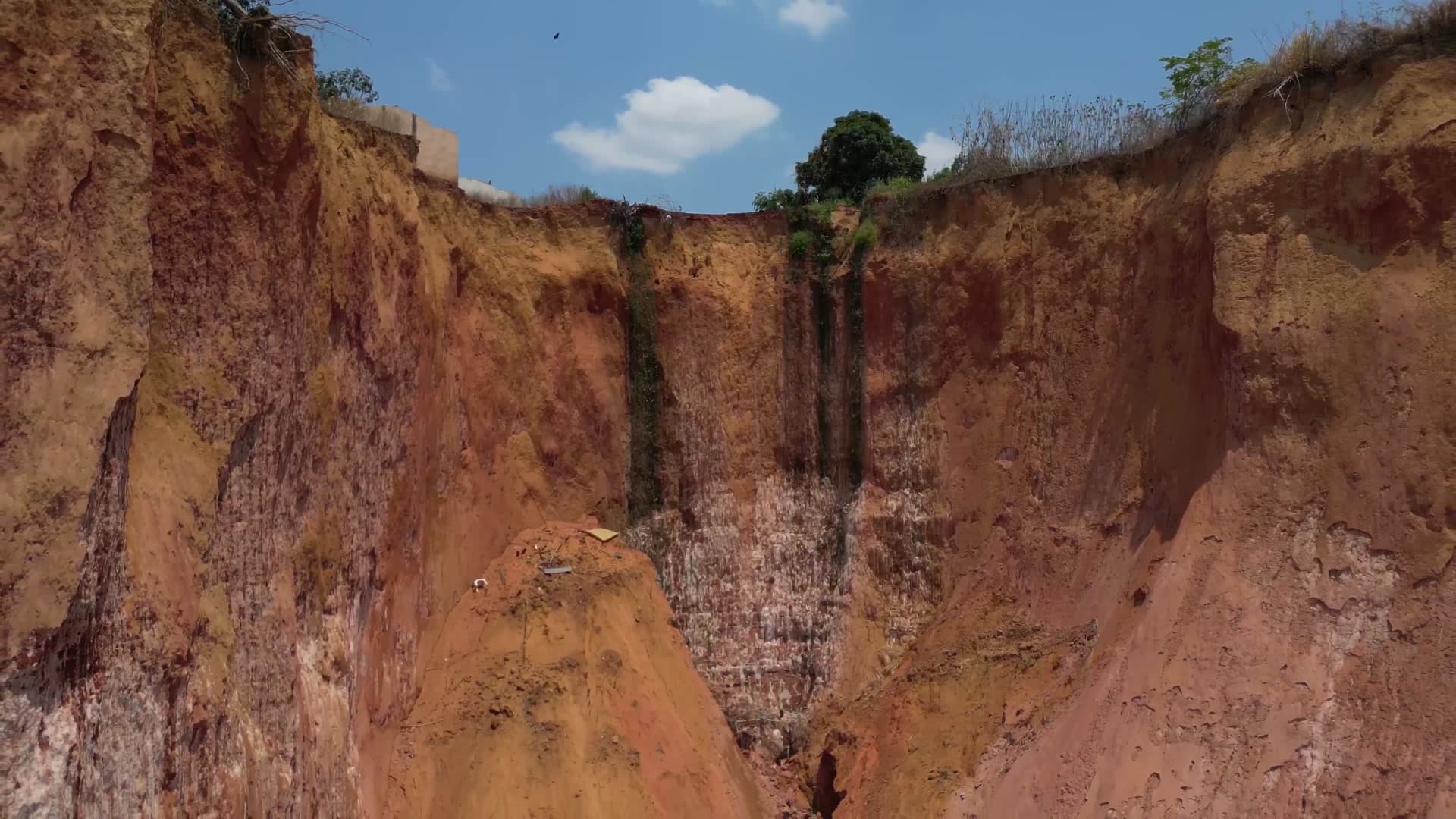
And e dey increase for speed wey suppose cause worry, as e dey destroy thousands of homes for Latin America and Africa.
Former police officer José Ribamar Silveira nearly die wen im fall inside dis gully.
Im loss as im bin dey drive go house from one party one night for May 2023.
As im bin turn di car, di 79 years old reverse, come accelerate go back. E bin dey dark, no warning sign anywia for di "voçoroca” and bifor im know how far, di car -wit am inside - enta inside di big hole.
“Wen di car slide, even though e bin dey fall fast fast, I bin tink of my youngest son," im tell BBC.
Baby Gael bin just turn four months old di day bifor. "I ask God to protect me so I go fit raise my little son," Lt Silveira tok.
Im bin dey unconscious and wake up for di bottom of di ravine three hours later. Afta one complicated rescue operation and months of recovering, im fit waka now witout crutches.
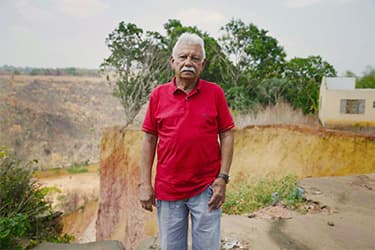
Im experience real example of di risks wey dey face Buriticupu 70,000 residents.
As more gully dey appear, di fear be say di city Maranhão, wey dey for di mouth of di Amozon rainforest, fit divide into two. At 350m above sea level Buriticupu get about 30 gully and di two biggest ones, na less dan 1km separate dem.
"If di authorities no manage dis, dem go meet, form river," Edilea Dutra Pereira, wey be geologist and professor for Federal University of Maranhão tok.
Gully don be part of Earth geological history for millions of years.
But Prof Pereira plus oda sabi pipo wey we bin tok to say dis gully wey already dey, dey expand more sharply and di fear be say new ones go open becos of climate change, wey fit make rainfall more intense.

And for places wia cities dey cities dey grow witout proper planning and infrastructure to deal wit rainwater, di risk dey increase.
Brazil na di worst affected kontri for Latin America, but Mexico, Colombia, Ecuador and Argentina dey also suffer from di same problem. And outside dat continent, kontris for Africa, like Angola, di Democratic Republic of Congo and Nigeria - wia some gully pass more dan 2km long - also dey affected.

Dis type of erosion dey threaten fertile agriculture land for some parts of China, US and Europe too.
“Too dangerous” to live here
E no get any official data for deaths wey get connection wit gully, but authorities for Buriticupu say gully don swallow at least 50 houses, of di pipo sef don abandon dia homes. Di areas dey empty.
Marisa Cardoso Freire house dey near one gully and local Civil Defence Force bin label am "high risk" for May 2023.
She along wit 100 other families, gatz leave dia house move go anoda part of Buriticupu.
City Hall bin promise to pay for di new houses for displaced pipo, but Marisa say di municipality no dey pay rent on time and dem dey threaten her wit eviction.
Wen we contact Buriticupu City Hall to ask wetin happun, dem no ansa.
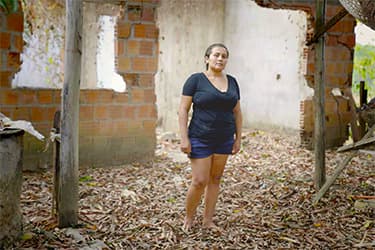
For Marisa old house, two of di family dog fall enta di gully, die.
Den one day she bin dey try to make her 10 years old son Enzo, wey dey autistic, to enta house and she raise her voice.
Enzo vex, come run to di mouth of di gully. "If you shout for me again, I go throw myself inside di hole," im threaten.
"Dat na wen I tell my husband say we no go fit stay here again, e too dangerous"
She fit no ever live for house wey she build again.
"Wen I leave, my heart wan break becos na sometin wey we bin fight hard to acheive."
How e take reach dis point?
Deforestation dey play big part for dis soil degradation.
Buriticupu don turn semi desert now, but na part of di Amazon rainforest trees bin cover di whole place one time, like cedar, West Indian locust and ipe.
For 1990s timber industry bin dey boom here. More dan 50 sawmills bin dey work 24 hours a day. Twenty years later, most of di city native plants don go.
“Di issue of vegetation dey essential, becos during rain, e dey reduce di impact of raindrops"
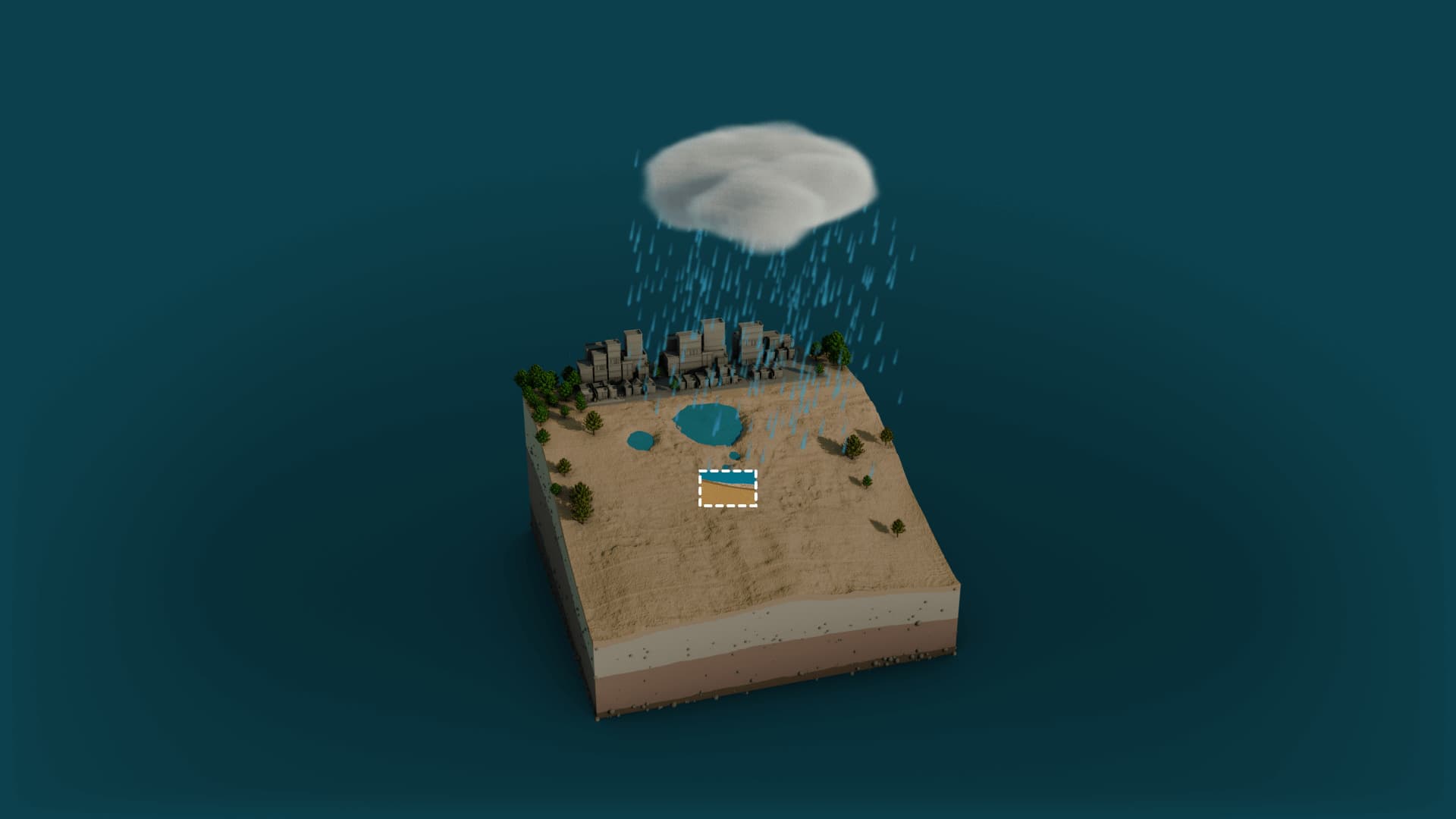
Wen plants or trees no dey enof to absorb di rain…
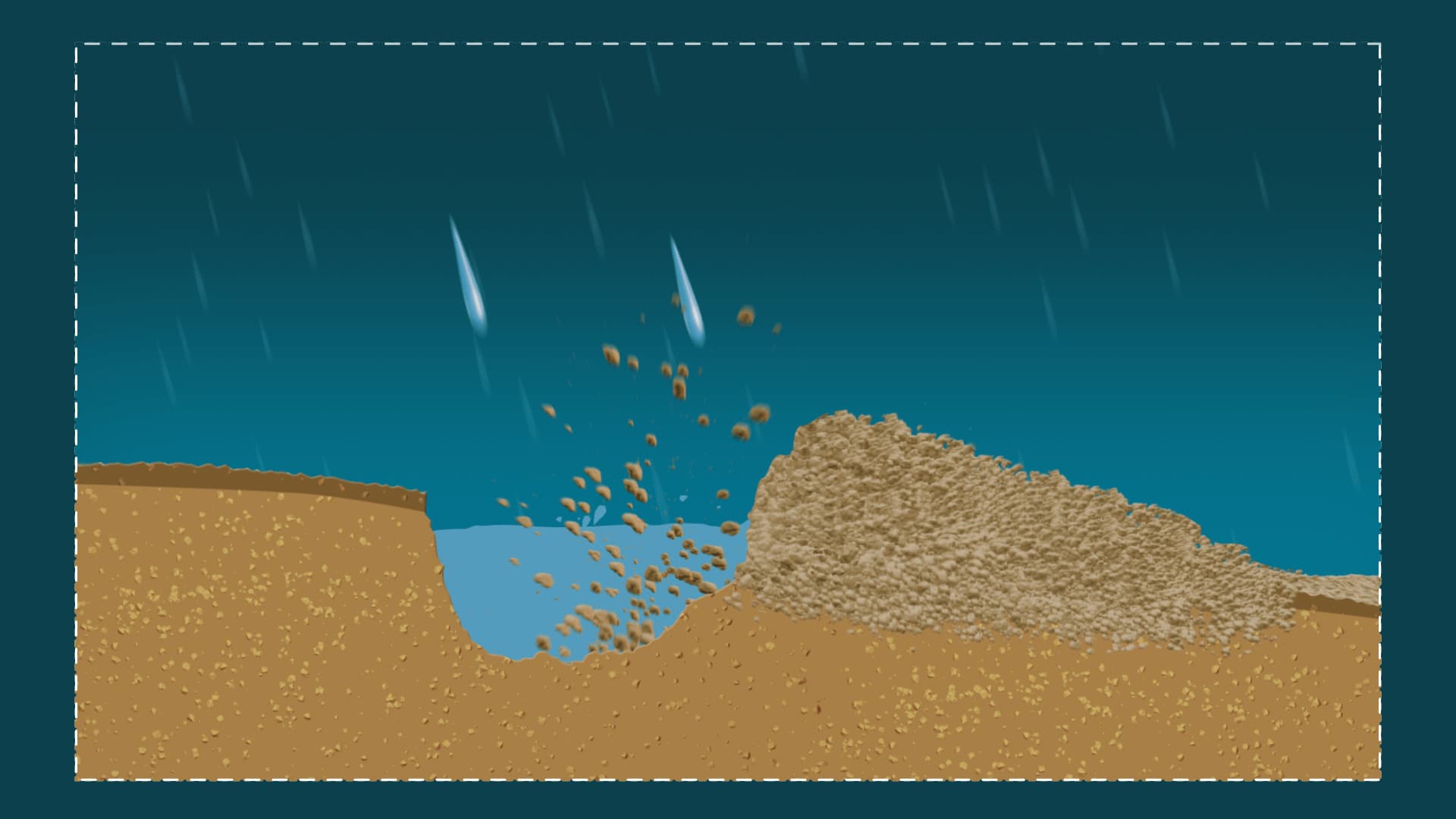
di drops dey dislodge soil particles and water go dey gada for surface.
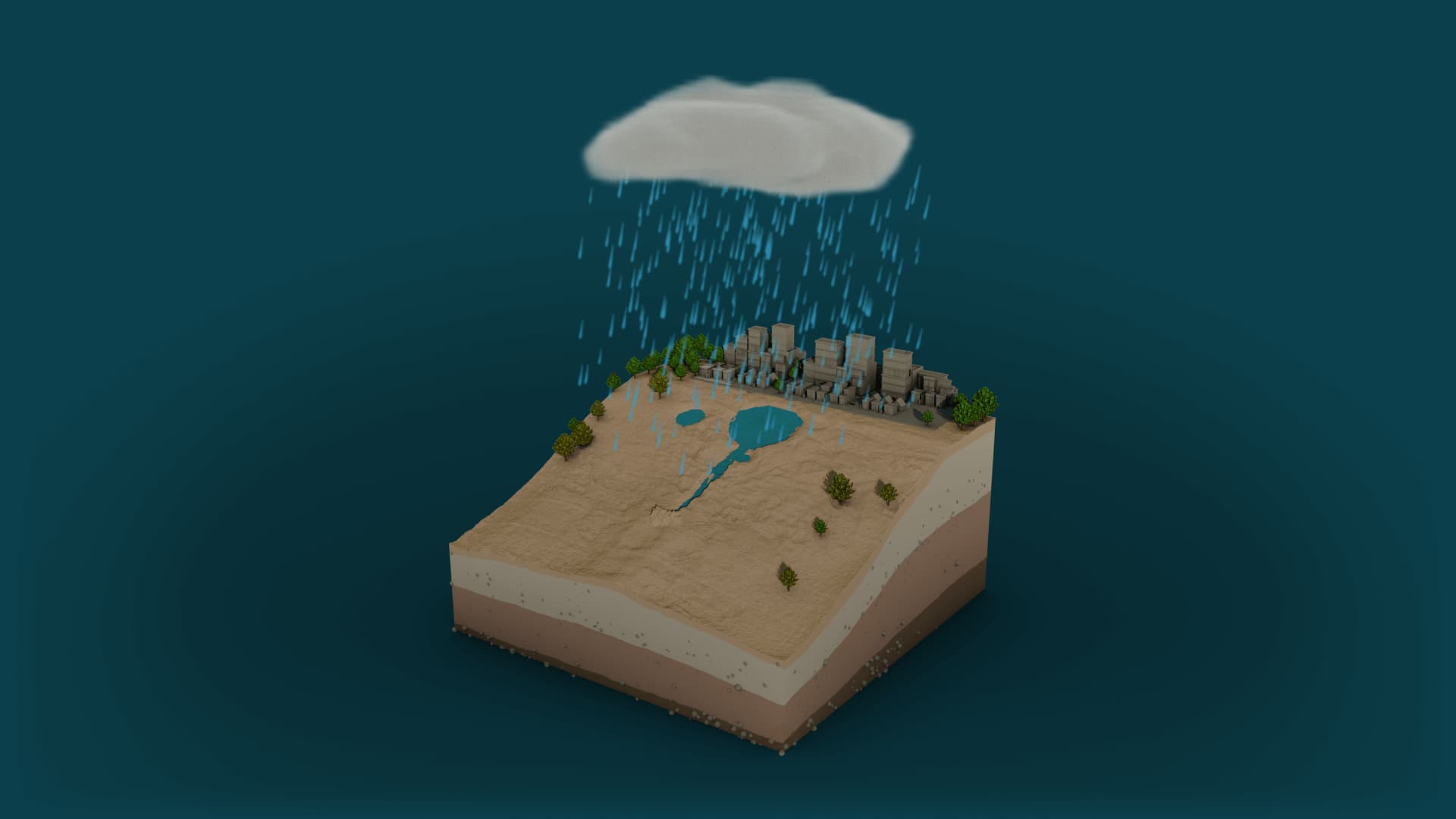
Streams form and affect di soil.
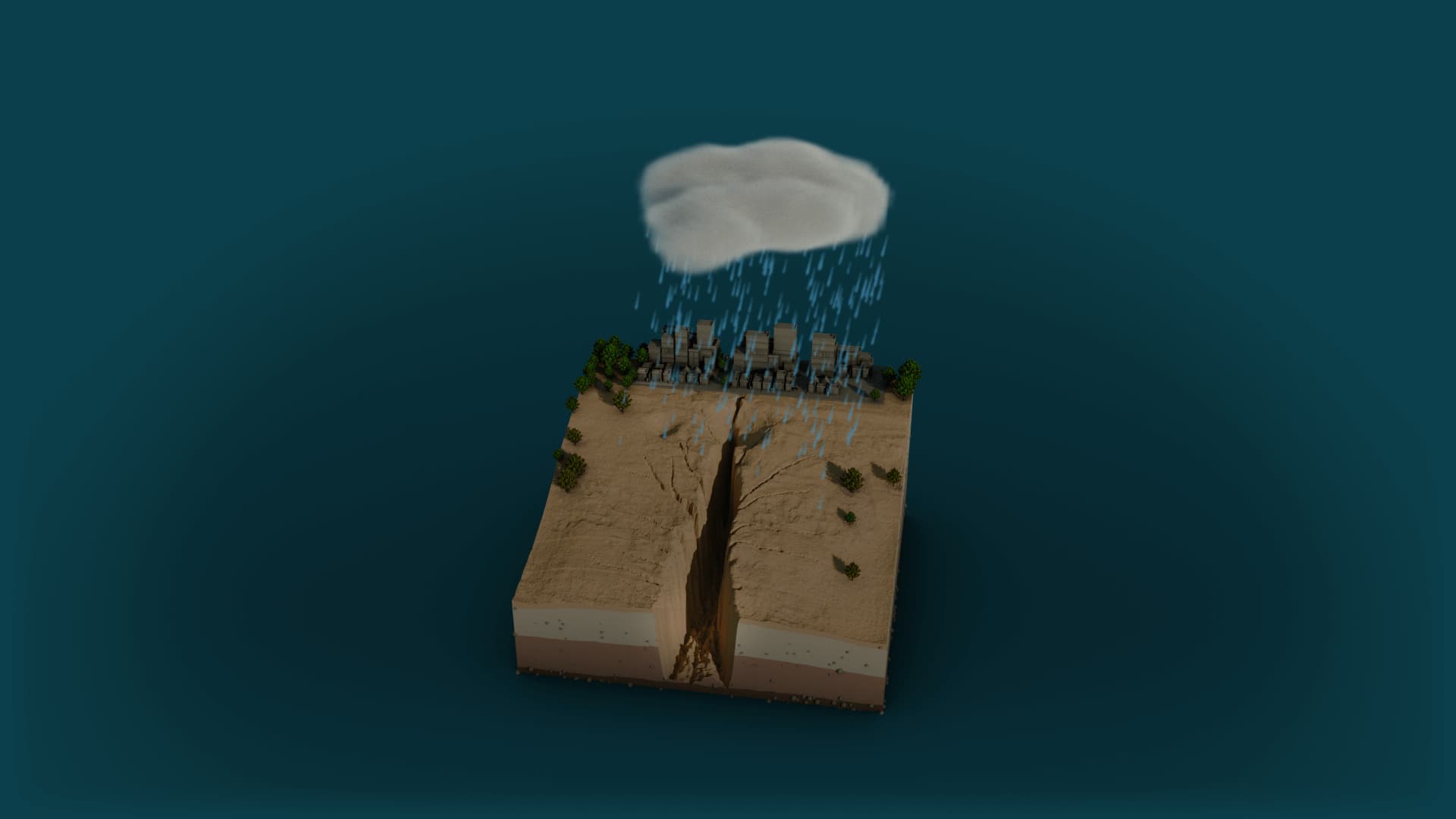
Gully fit dey created.
Climate change fit fasten di process for areas wey fit easily dey prone to gully erosion as e fit lead to more intense rainfall.
Buriticupu dey experience more violent storms now dan bifor, according to Juarez Mota Pinheiro, one climatologist for Federal University of Maranhão.
For di first months of 2023, di state of Maranhão bin face one of di flood for im history. More dan 60 municipalities enta state of emergency, thousands of pipo become homeless and many die.
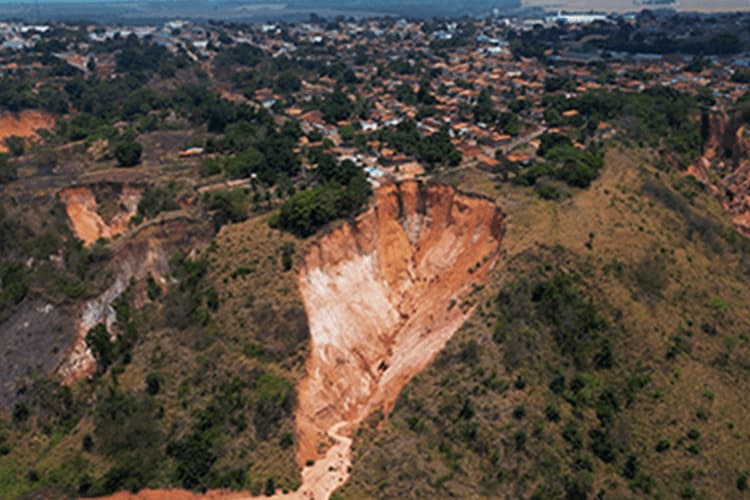
"Prediction be say di amount of rainfall go increase by 10% to 15% [around di world by di end of di century]. E fit no sound like plenty, but if you get more and more cases of extreme rainfall, di whole mata around erosion go change," Matthias Vanmaercke, from KU Leuven University for Belgium.
Im and colleague Jean Poesen analyse data from more dan 700 gully around di world and conclude say, if exreme rainfall increase by amount, e fit double (or even triple for worst-case scenario) di risks of gully erosion.
“E hard for you to find decent scientist wey no go agree wit di fact say climate change go probably make am worse,” Prof Vanmaercke say.
Fear of di rain
Dis mata dey affect pipo around di world, including millions for Africa.
Di capital of Democratic Republic of Congo, Kinshasa, get hundreds of urban gully - one of dem na 2km long. Dem get more dan 165km of gully for di city wey be home to 12 million pipo.

Inside just one night of heavy rain for Kinshasa for December 2022, 60 pipo die wen dia house fall enta gully.
Alexandre Kadada bin dey dia.
”E happun within 30 or 40 minutes. Di gully start to open up and all di house disappear. You no fit recognise di area again,” im tok.
“My belongings, my house, everytin go. I only save my children and my wife.” ”
Kadada neighbour and her four children bin dey among di victims. Di woman husband become disable.
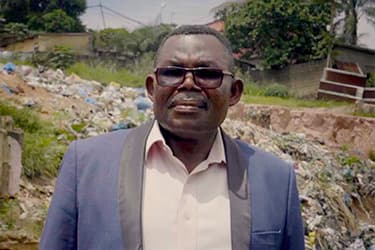
Kadada children dey fear now, anytim weather change even small.
“Na di rain bin scata everytin. Di rain bring death and heartbreak,” im tok.
“We really consider am as new geohazard of di Anthropocene,” Prof Vanmaercke, tok. Anthropocene na word some scientists dey use refer to wen human activities dey seriously affect di planet.
Di population for Kinshasa dey expected to grow to 20 million by 2030 and 35 million by 2050, to become di largest megacity for Africa, according to World Bank.
Uncontrolled urban growth fit involve cutting down trees wey be natural barrier to erosion - and living illegally for areas wey dey unstable.

For Buriticupu, pio dey also fear rain.
"E get sometimes wey land di size of house go collapse. E dey make violent noise, shake everytin. den pipo cry. Di sadness wey e dey cause dey crazy,” 52-year-old João Batista wey be mechanic wey get im own workshop for mouth of di huge gully, tok.
"I don lost 40% of my customers. Manydey fear to come,” im tok. But im no gree comot.
Di voçoroca behind im workshop bin be playground for children bifor, im tok, but di gully swallow everytin.
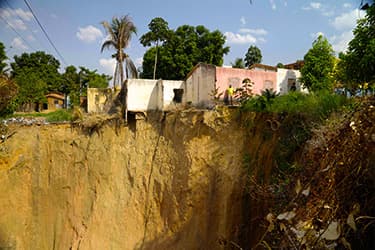
Im decide to plant bamboo to try to slow di erosion. But due to di level of di problem, Buriticupu need much bigger solutions.
Wetin we fit do?
But wit di right engineering and investment, "all of dis fit stop", Prof Vanmaercke tok.
To stop gully erosion, cities gats build proper drainage systems to control di flow of rainwater and run-off, Prof Poesen explain, to divert water away from areas wey fit get gully.

But dis projection dey cost money for cities wia budgets tight.
Di public lawyer office for Maranhão say e dey take legal action against di city of Buriticupu, unto say e no do di plan wey dem agree.
Buriticupu Mayor João Teixeira da Silva no gree comment on di case but say don ask for financial help from goment to pay for work wey go divert di flow of rainwater.
Di national goment tell us say dem dey consider weda to release 300m Brazilian reals ($60m; £47m) for Buriticupu. Dem add say dem don already provide 629,000 reals ($125,000; £100,000) to build one canal and storm drain, restore local roads and demolish 89 houses.
Di Ministry of Environment say dem get one programme to implement "resilient system for cities", but dat one no go do anytin for Buriticupu.
“Dis na complicated work, work wey need plenty money,“ di mayor tok. “Wetin we need na responsibility, both for municipal, state and federal levels."
But João Batista dey aware say if di gully behind im workshop grow, im gatz to move.
Dis na nature dey tell us say if we look afta our planet, e go destroy. If rain kontinu like dis, den na God hand we dey becos e no get anytin wey we fit do.”


